And Then We Came to the End: Looking back on this year's Edinburgh Fringe
Some final (I promise) thoughts on the 2024 Edinburgh Festival Fringe.
I’m back in Belgrade, which is still in the grip of a heatwave and is uncomfortably muggy, but turns out I still have a few things to say about the Edinburgh Fringe, more on which below.
My latest column for The Stage is on the abrupt dismissal of Matej Drlička from his role as director of the National Theatre in Slovakia and the open letter that was published by Milo Rau and the artistic board of the Schauspielhaus Vienna in response.
Café Europa is free and I’m really keen to keep it that way, but if you’d like to help sustain it, support my writing and receive the occasional bonus edition, please consider becoming a paid supporter. You can do so for £5 or £50 a year. Or just share it with anyone you think will like it. That’s cool too.
It’s over. By the time the 2024 Edinburgh Festival Fringe wrapped up on 26th August, 2.6 million tickets had been sold to 3,746 shows, which made it the most successful festival since the pandemic, if not quite up to the same levels as 2019, when more than three million tickets were sold. The hoardings will have been taken down, the posters removed and the purple cow packed away for another year.
The thing about the fringe is it’s very hard to think objectively about it while you’re in it. The pace is so relentless, the experience so full-on, so bloody much, that it’s hard to stand back and examine it with any degree of clarity. It is not a space (somewhat ironically) for reflection.
That’s partly down to time. Most fringe shows are around an hour in length, which means it’s entirely possible to see nine shows a day if you so desire (and, believe me, people do). Social engagements are made by swapping fringe spreadsheets and identifying mutual windows in your schedules; your days get broken down into one-hour slots. It is a place where people leave themselves gaps so small between shows that a five-minutes delay can throw a spanner in the works. On more than one occasion, I’ve seen people sprint out of a show with minutes to go before the end. As one performer gently pleaded at the start of their show, if you’re cutting things that fine, I’d rather you arrive a couple of minutes late, then leave in the last few minutes, when the show is building towards the finish. It’s so much more disruptive (and, I’d argue, disrespectful) that way.
(Speaking of cutting it fine, kudos to actor James Akka for performing the very silly influencer comedy Life’s a Beach right before high-octane Powerpoint monologue Sorry (I Broke Your Arms and Legs), with just a 20 minute gap between shows, a feat which deserves some kind of recognition).
Even when I’ve been actively enjoying a show, I sometimes find a small portion of my brain is thinking about the best route to take to the next venue, or whether I will have time to grab a coffee between shows. It’s hard to get fully submerged in a show this way. Hard to fully give yourself to it. A friend describes the way a fringe body clock kicks in after a couple of days, you instinctively know when the hour is up. A show which runs, as some do, to 70 or even 75 minutes, starts to feel like an imposition. Which if you think about it, is fucking nuts.
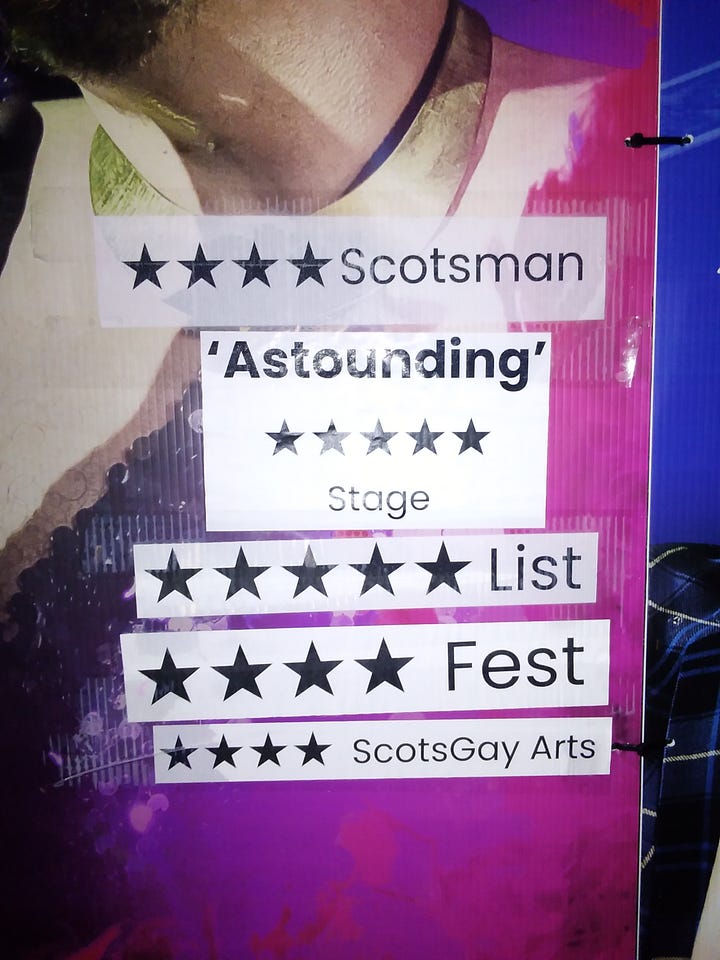
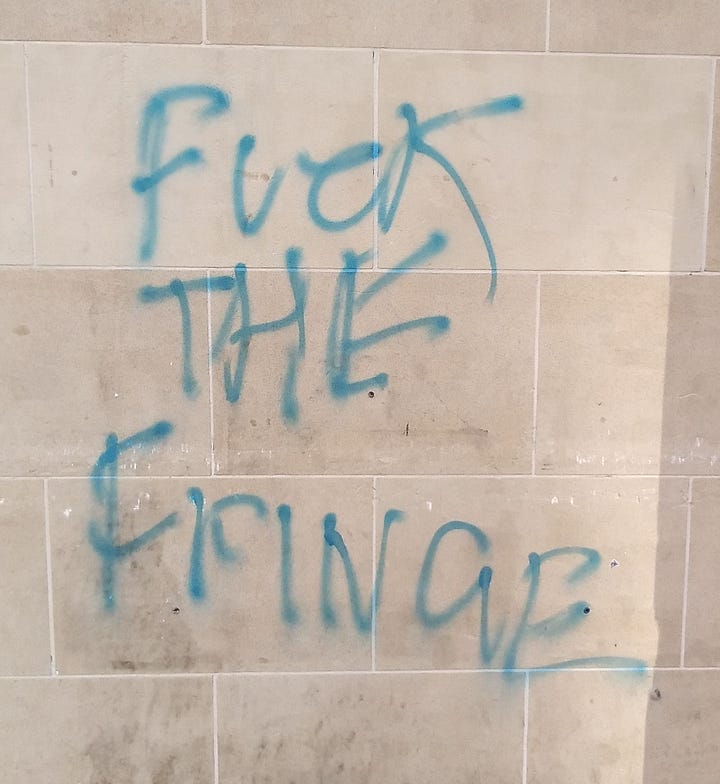
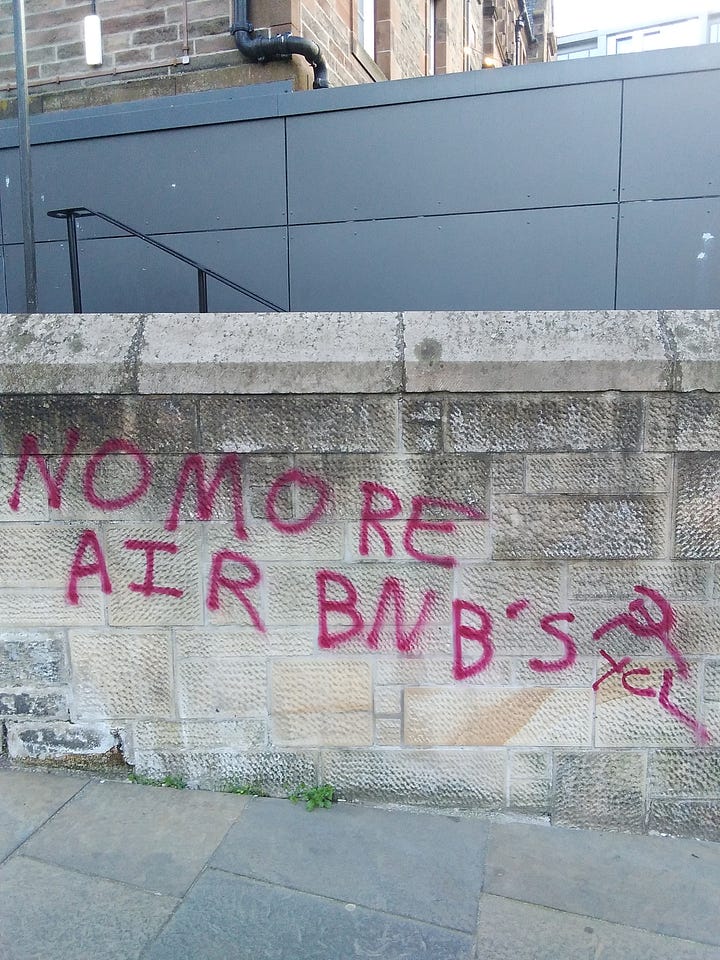
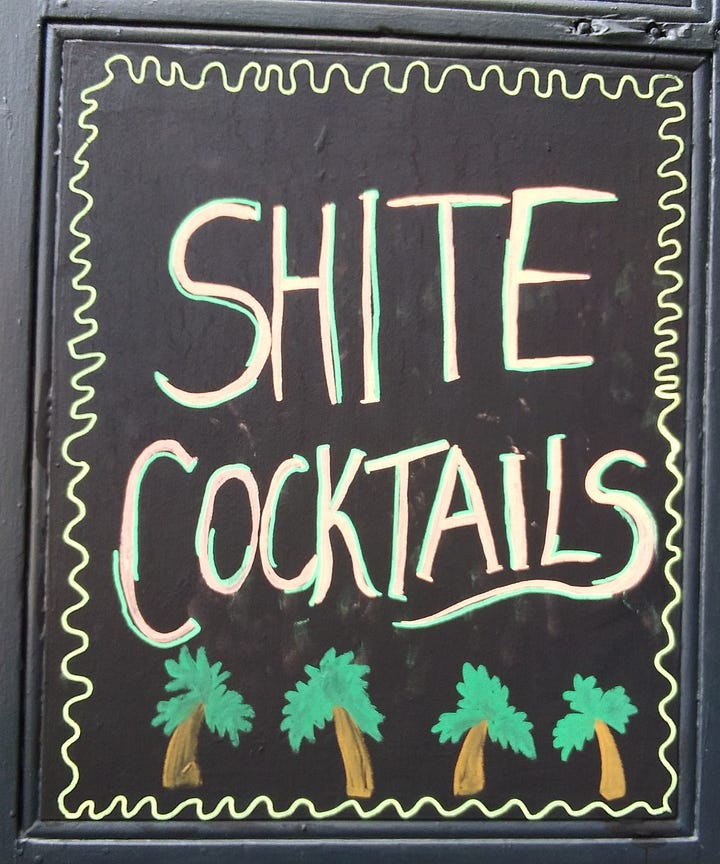
“But it reads like a four…”
The process of reviewing work at the fringe is a very weird activity. There is no time to let a show percolate, little space to sit with the thing you’ve seen. Reviews are rapid fire, short bursts of words, in many cases blunt instruments usually with a star rating slapped on them. Every year people kvetch and fret over the stars. Artists loathe them but need them. Lyn Gardner wrote the obligatory annual think-piece about the star-rating system and it’s impact on artists – and critics – at the fringe. “Theatre may profess to disliking star ratings, but goodness, it has bought into them heavily as a form of validation for what it does rather than knowing its own true value and wanting to have a proper dialogue about artistic intention.” If I had a pound for every time I heard someone complaining “but it reads like a four” I could buy a (very small) round in the Pleasance Courtyard.
Of the 55 shows I saw, 21 were solo shows. Two of the fringe’s biggest recent successes, Fleabag and Baby Reindeer were of course solo shows, which may be a factor, but as The Stage’s editor Alistair Smith wrote in a piece about the dominance of the solo show at the fringe, in the past, it was not unusual to see mid to large-scale commercial plays staged at the fringe, shows like 2012’s An Appointment with the Wicker Man, a musical version of the cult 1970s folk horror (yes, really - here’s a fun Guardian article about it) or the 2013 production of The Shawshank Redemption starring Omid Dajilili and Kyle Secor, but as Smith points out work of this scale in almost unheard of now. This is, he says.is “a challenge for the wider UK theatre ecology, which used to rely on the fringe for a steady stream of touring product that would fit into the UK’s existing regional infrastructure of predominantly quite large theatres. Instead of producing the kinds of shows that can play in those houses, Edinburgh is now almost solely developing shows that can play in their studio spaces.”
There are anomalies. Last year Danish company Fix+Foxy presented Dark Noon, an ambitious exploration of American history featuring a company of South African actors who construct a small town on stage over the course of the show, which, incidentally, was one hour 40 minutes long, an almost unthinkable length for a fringe show these days. It ended up being one of the fringe’s biggest critical hits and one of the most talked about shows of the fringe. On the day I went there was a palpable buzz in the queue. It subsequently went on to have a successful run in New York.
While it was presented under the banner of the Danish Showcase, Dark Noon was produced in Edinburgh by Alchemation, Glynis Henderson Productions, and Pleasance and performed at the EICC. It made the case that there is still space on the fringe for work of this nature. Though interestingly, when I interviewed the show’s co-director Tue Biering, he said he was reluctant to return to the fringe after a dispiriting experience bringing previous show Rocky! to Edinburgh in 2022. He was persuaded to give it another shot. Work like that can flourish in the fringe but only with significant backing and marketing savvy.
This year the Pleasance presented three pieces by Poland’s Grotowski Institute in a specially constructed temporary venue behind the EICC. These shows didn’t cause the same stir as Dark Noon, but one of these pieces, The Border - inspired by the work of Ukrainian non-binary artist and soldier Antonina Romanova, who appears in the show via video - did win a Fringe First. The piece by Studio Wachowicz allows Romanova, who is fighting in Ukraine and cannot leave, to have a presence at the festival. As Joyce Macmillan wrote in The Scotsman, “it conjures up the pressures of both the war and the long journey towards full rights for gay, trans and non-binary people; as well as insisting on the right of artists like Romanova to continue to be heard, even when war prevents them from full practising their art.” It was not the easiest of pieces. It dealt in ritual and gesture. It did not hold its audience’s hand. While it’s encouraging to see the Pleasance helping to bring this work to the fringe, this is an increasingly rare experience at the fringe, I find. There was a time when it wasn’t so. There was more weird and wild stuff. I expect there’s still a fair bit of it, but I’m not seeing it. (I mean I did see a performer wash an audience member’s feet in a Quaker Meeting House while cooing over a box of vibrators as if they were baby chicks - take a bow Glossy Pain’s Lie With Me - but this used to be par for the course).
There are simply less critics around for less time and so much more work and it’s all you can do to see the on-the-up stuff, never mind go off-piste. It can seem, justifiably I think, like critics move in packs at the fringe and cover the same stuff as each other. I’m part of the problem. I didn’t dip into the Free Fringe once this year and it’s been a long while since I frequented the sticky innards of Banshee Labyrinth. I feel that one of the roles of the fringe critic should be discovery and yet that’s harder and harder to manage and I don’t know the solution.
Risky business
This year there were 13 official showcases from countries including Canada, South Korea, Luxembourg, Taiwan, Denmark and Germany, who presented their first fringe showcase. There was no Finnish or Belgian showcases this year, though there usually a significant presence. Other countries, like New Zealand, were significantly represented too.
This year I saw two pieces from the Danish programme: Tennis by the renowned physical theatre company Don Gnu, a comedy inspired by the 1980 Wimbledon final between Bjorn Borg and John McEnroe. This was as slick as it was funny, an easy sell of a show, whereas The Disappeared, by Down the Rabbit Hole, was a piece of burlesque – somewhat boldly programmed at 13.45 - featuring the charismatic, corset-clad performer Nova Dah that explored the experience of being queer in south America. Quite disparate shows, but that’s one of the benefits of being presented as part of a national showcase: the risk can be shared.
It was also hard not to notice that a lot of the international work I saw this year often felt a bit more technically complex and, well, a bit more finished, than a lot of the homegrown work. I found myself writing variants on “this could benefit from more rigorous structuring/development/dramaturgy” in reviews a lot. Yes, I appreciate that’s easy for me to say, but I saw so many things that would have benefited from a few more passes over the script or sharper direction, work that felt so very almost but not quite there yet. It wasn’t just me. Producer Richard Jordan also talked about this in this piece on artistic risk and the fringe, which rightly highlights young company piss / CARNATION’s Ugly Sisters as a work that was pushing things in a way that felt daring and exposing in the true spirit of the fringe.
There’s obviously a reason for this. Most of those countries have a healthier arts funding system than that of the UK- and taking work to the fringe is a fucking nightmare. It’s prohibitively expensive and logistically daunting. Producer Ellie Keel has written candidly about the juggling acts involved. Here’s a piece from last year on risk (and risk aversion) and a piece from this year on the rise of the artist-producer. Learning some of the skills of a producer would be useful, she argues. “Understanding – and caring – about every aspect of the production will make your work better, and help you get more work on.” There are clear benefits to this but also drawbacks too. Amid the fundraising, budgeting and publicity-generating, it can be hard to find the time to hone your show; clearly a balance needs to be struck.
So, it felt like a kick in teeth that right in the middle of the fringe, Creative Scotland decided to announce it was closing its Open Fund for Individuals. Lyn Gardner has written about the consequences of this here. There have been protests by well-known actors. Fringe Society chief executive Shona McCarthy has also spoken out about how despite this year’s healthy sales the fringe will struggle without more robust funding. In an open letter published on the closing day of the fringe - which you can read in full here - she said: “Here at the Fringe and across the UK, the pipeline of creative potential is under threat. Artistic risk and ambition is hamstrung by an operating context that squeezes out emerging artists who have made the Fringe globally renowned, unique and joyful.”
On top of that, the future of Summerhall, the former veterinary college that has become a hub for devised work, is in jeopardy. In May this year it was announced that the owners had put it up for sale. There was talk of the site, which also includes a pub, a brewery, and the archive for arts impresario Richard Demarco, becoming a hotel or fancy flats. Summerhall actually had a record year this year in terms of ticket sales, issuing over 103,000 tickets over the course of the festival (perhaps an element of use-it-or-lose-it in evidence here) and fortunately the owners have since offered a new three-year lease which – hopefully – will secure things for a little longer, but for how long?
A festival of memories
When I was a teenager, I used to be fascinated by the fringe. I used to study the coverage and devour those dispatches they used to run after Newsnight, back when the BBC covered it more thoroughly than it does now. A month-long celebration of culture that people flocked to from all over the world! I hungered to be part of that. Finally, after university I went up for a weekend during which I saw mostly comedy, got my copy of Generation X signed by Douglas Coupland, and spent a mildly hungover Sunday sitting in the sunshine in Leith. I barely scratched the surface. I couldn’t wait to go back.
And I still get a sense of excitement and delight whenever I get my first glimpse of the castle or smell that distinctive yeasty Edinburgh smell. Over the years, it has become a festival of memories. After 10 years of fringing, I wrote this. That feeling of accretion has grown even deeper since then. I struggle with a lot of things about the fringe - it is a machine, it is unforgiving, it is exclusionary, it is extortionate, it asks artists to condense their creative vision into hour-long nuggets: it arguably needs to change. Yet I can’t completely disconnect the reality with the ideal of what it could be, what it has been, and what it still sometimes is, albeit fleetingly. That’s what keeps me coming back.
This week in European theatre
A round-up of festivals, premieres and other upcoming events over the next seven days
Theaterfestival Basel – The Swiss theatre festival takes places in venues across Basel and features a cracking programme of theatre dance and music, this year including Miet Warlop’s After All Springville and Salim Djaferi’s Koulounization. It started on 20th August and runs until 1st September.
Noorderzon – Taking place annually in Groningen, Noordeezon is a blend of international performing arts festival and summer festival with a programme that mixes theatre, circus and music with highlights including Tiago Rodrigues’ Catarina and the Beauty of Killing Fascists, Ant Hampton’s Borderline Visible and work by Serbian company Heartefact. The festival opened on 22nd August and runs until 1st September
Draama Festival 2024 – The Estonian theatre festival will take place in Tartu this year and the programme will feature Timofey Kulyabin’s staging of Brecht’s Fear and Misery of the Third Reich and Fun Fact, a devised piece from Slovenian and Estonian performers. Also including work from the Estonian Performing Arts Showcase, it runs from 1st -8th September.
Thanks for reading! Normal, non-fringe service will be restored next week. If you have any feedback, tips, or thoughts about this newsletter, you can reach me on natasha.tripney@gmail.com




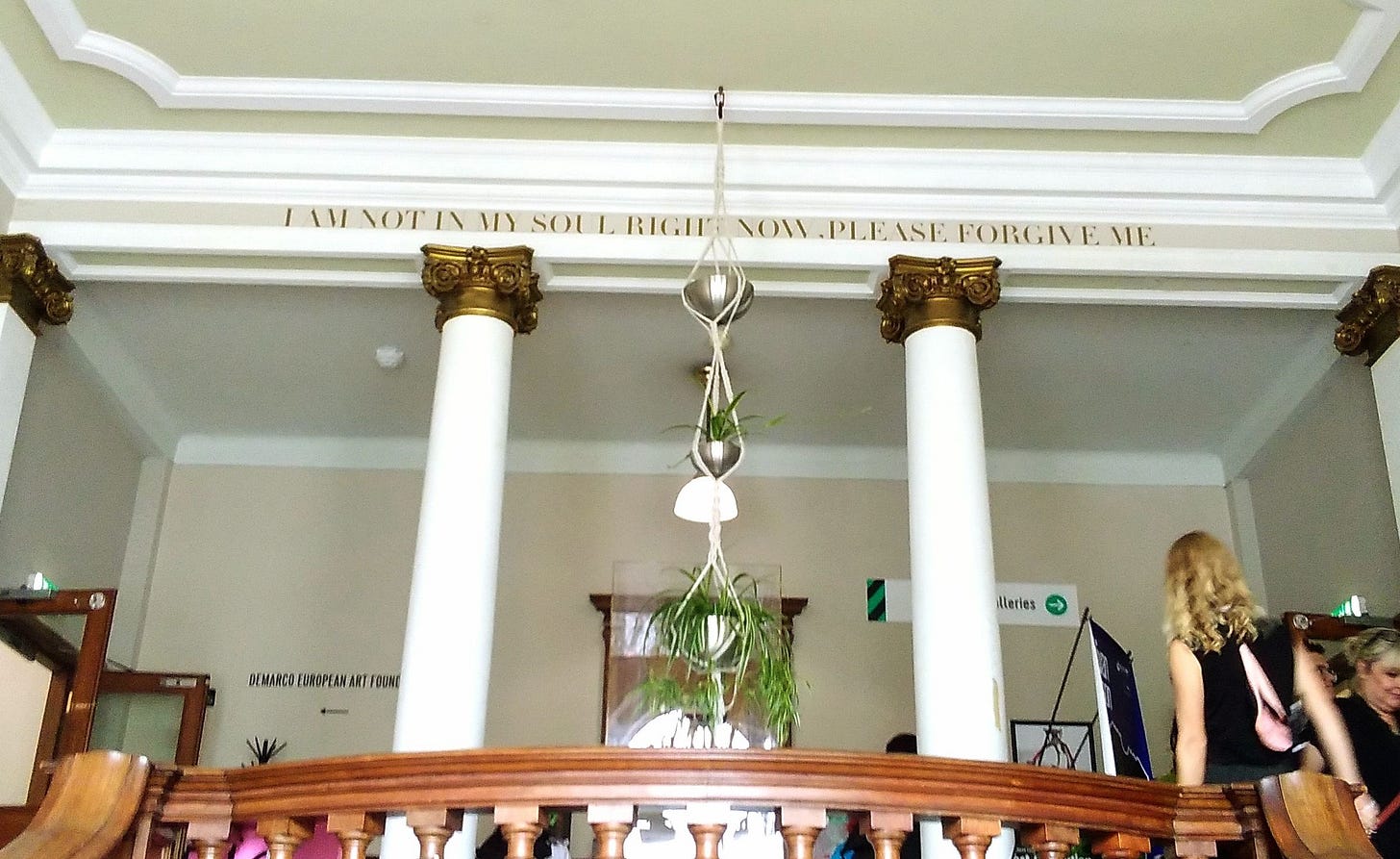

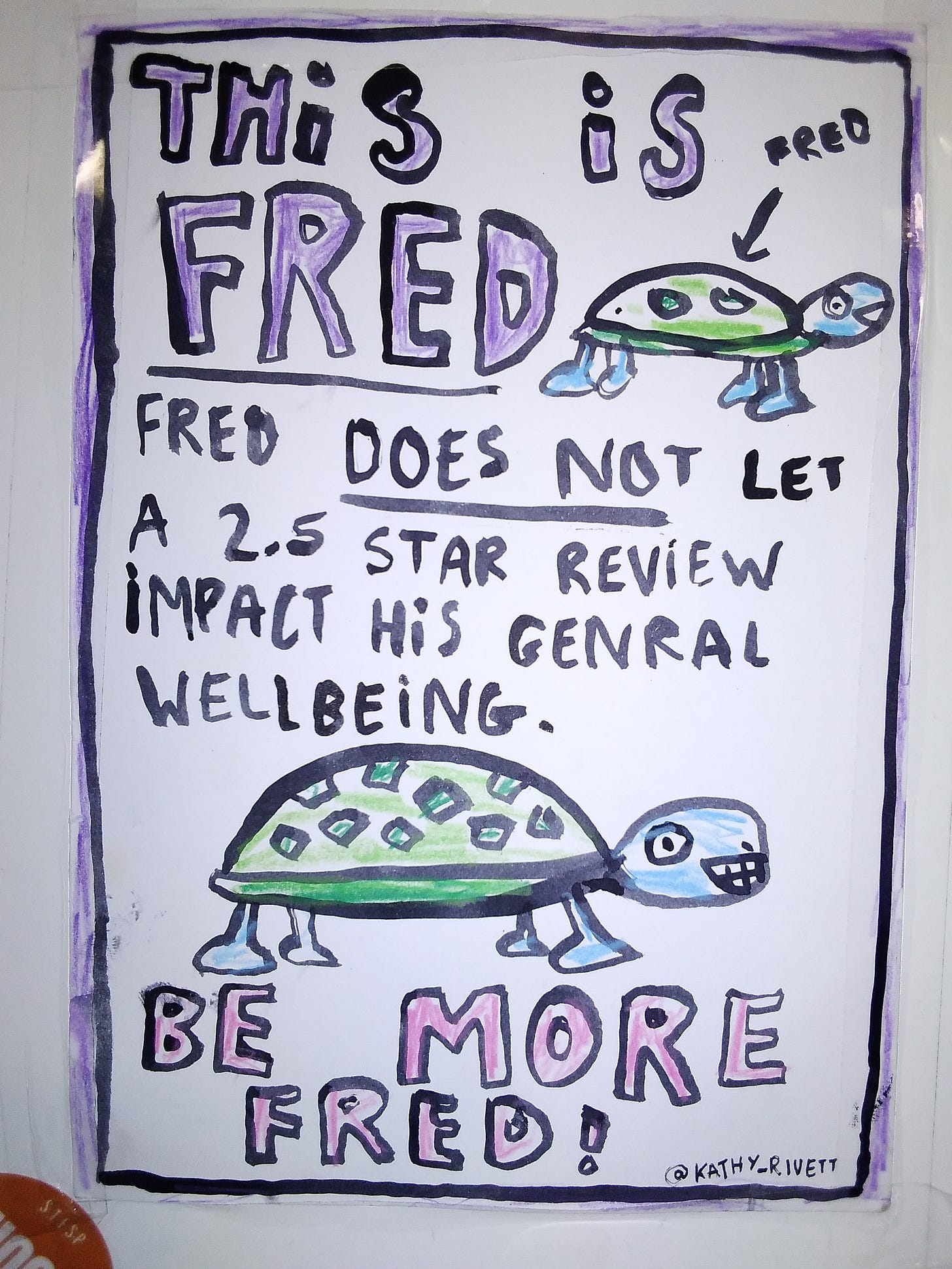

Oh God, this took me back. I've only gone that one year with Shawshank, but this and the linked article of your decade of writing about The Fringe were so evocative. So filled with the atmospheric surprises that awaits one - that it now feels like the entire festival is one long performance piece. Even the memories! "Cooing at vibrators," wish I could have seen that and all the many other pieces you've mentioned. I remember that sense of rushing; how often we cut lines and scenes from the play and were encouraged to 'keep it moving', and the people running out (sometimes backwards, not wanting to miss it even while exiting) even before curtain call. It was weird, rushed for a performer, but part of the contract and you knew it was coming. Wonderful, you captured the magic, and the full-on-ness of it so well. Big challenges to be sure. Thanks Natasha!
Interesting piece - sounds like you saw a lot of brilliant work